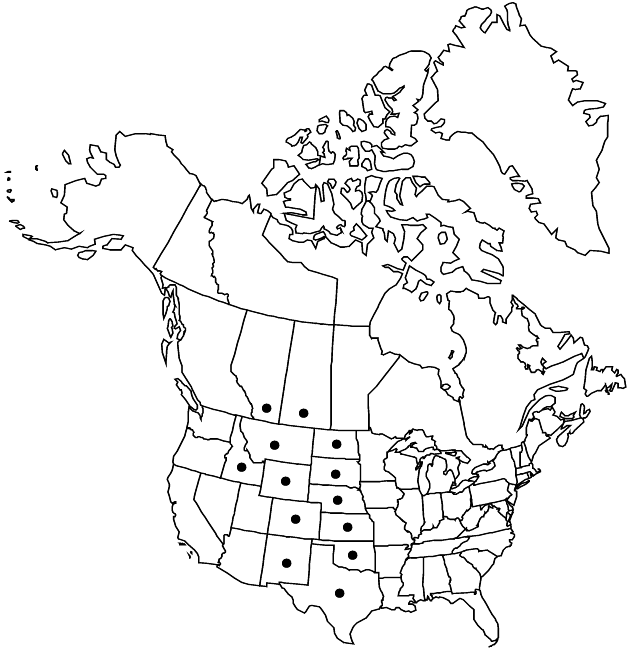Tetraneuris acaulis var. acaulis
Plants (3–)10–20(–30+) cm. Leaves: blades spatulate or oblanceolate to linear-oblanceolate, usually densely, sometimes sparsely, strigoso-canescent, sparsely to moderately or densely gland-dotted. Heads 1–10(–15) per plant. Peduncles (2–)8–20(–30) cm. Outer phyllaries 6–10, 4–7 mm, margins 0–0.2(–0.4) mm wide, sometimes slightly scarious, abaxial faces usually densely hairy. Ray florets 8–14; corollas 9–15 mm. Cypselae 2.5–3 mm; pappi 2.2–2.9 mm. 2n = 28, 30, 56, 60.
Phenology: Flowering (Apr–)May–Jul(–Oct).
Habitat: Roadsides, hillsides, grasslands, edges of woods
Elevation: 700–2000(–3500) m
Distribution

Alta., Sask., Colo., Idaho, Kans., Mont., Nebr., N.Mex., N.Dak., Okla., S.Dak., Tex., Wyo.
Discussion
Some plants of var. acaulis from Colorado and southeastern Wyoming have considerably less hairy and/or more densely gland-dotted leaves, making them easy to confuse with var. arizonica. As to distribution, label on a collection at LL reads, “From W. A. Curtis, Lewistown [Idaho], without definite locality but probably collected in that vicinity.” Also, the holotype and isotype of Tetraneuris septentrionalis were collected in “Palouse County, Idaho.” These are the only collections we have seen that place var. acaulis west of the continental divide.
Selected References
None.